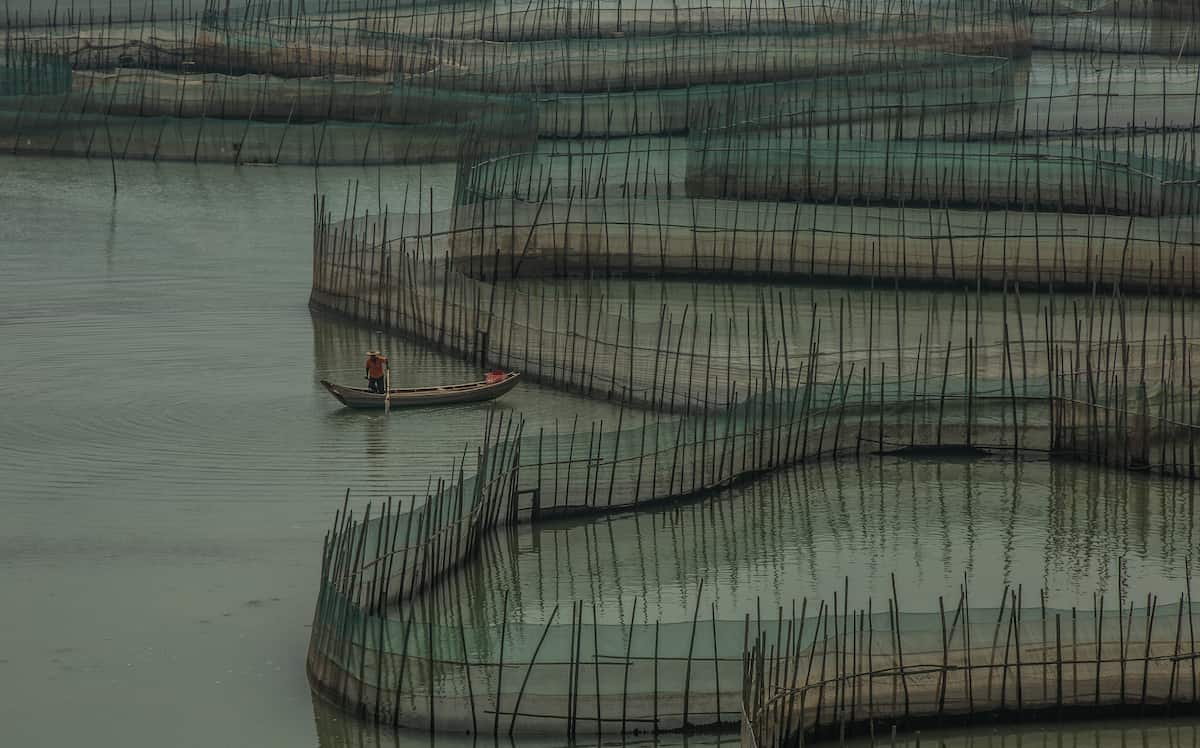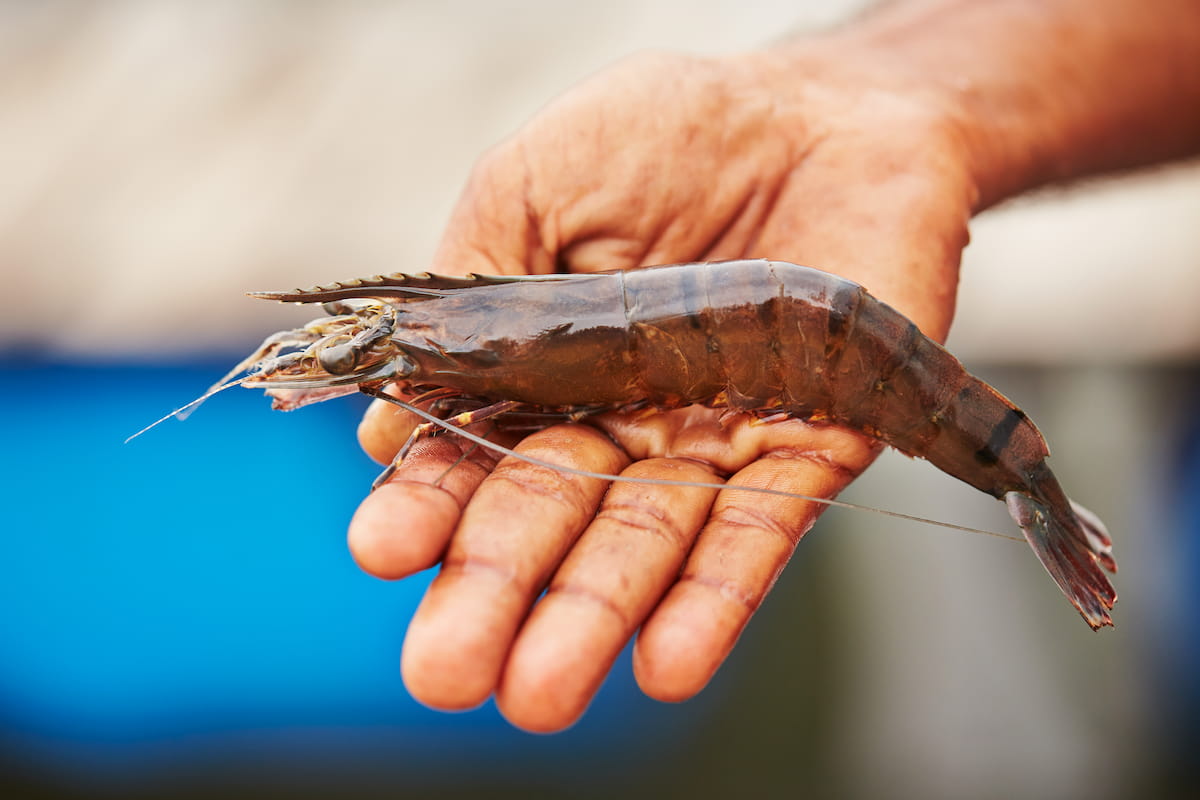Sustainable shrimp farming is a method of producing shrimp in a manner that is environmentally responsible and socially beneficial. This aquaculture method aims to minimize the negative impacts on the environment while providing a reliable source of high-quality seafood. Sustainable shrimp farms utilize advanced techniques to reduce waste, limit pollution, and ensure the health and well-being of the raised shrimp. With the global demand for seafood rising, sustainable shrimp farming is a key solution to this demand while preserving our oceans and marine ecosystems.

Sustainable Shrimp Farming
What is Sustainable Shrimp Farming?
Sustainable shrimp farming is a farming method that aims to produce shrimp in a way that minimizes adverse impacts on the environment and local communities. Traditional shrimp farming methods have been criticized for their harmful effects, including habitat destruction, water pollution, and the use of antibiotics and chemicals.
Sustainable shrimp farming practices use various methods to address these issues, such as integrated multi-trophic aquaculture, closed-loop systems, and organic farming methods. These practices help reduce the amount of waste and chemicals used in the production process while preserving natural resources and supporting local communities. In addition, sustainable shrimp farming can provide high-quality seafood free of harmful chemicals and antibiotics.
Why is Sustainable Shrimp Farming Needed?
- Negative effects, such as the loss of mangrove forests, the contamination of coastal waters, and the introduction of new diseases, can result from unsustainable shrimp farming operations.
- These negative impacts can have social, economic, and health effects on local communities, leading to a decline in the ecosystem’s overall health, including biodiversity loss.
- Using closed-system ponds or recirculating aquaculture systems are examples of sustainable shrimp farming practices that can lessen the industry’s negative environmental impact and secure the sector’s future.
- Implementing sustainable practices can also help improve the reputation and marketability of the farm’s products, leading to increased profitability and economic stability for the community.
The Problems with Traditional Shrimp Farming
- Disease outbreaks in farms have resulted in severe drops in output over the last two decades, despite advances in technology and science that should ideally increase yield.
- Effluent management issues lead to poor pollution control, which may result from the high-density nature of intensive production.
- Deforestation and degradation of mangrove habitats have major consequences for local communities and ecosystems, including greater sensitivity to climate change, loss of fish habitats, and increased pollution.
- Conflicting other economic activities, including fisheries and tourism, leads to land-use conflicts.
- Rapid industry expansion causes environmental deterioration, with shrimp farming regarded as one of the primary drivers of mangrove deforestation globally, contributing to global ecological damage and coastal zone eutrophication.
To address these challenges, the shrimp farming industry is increasingly shifting towards sustainable practices prioritizing responsible and environmentally-friendly production.
In case you missed it: 10 DIY Essential Steps to Prevent and Treat Shrimp Diseases

Sustainable Shrimp Farming Practices
- Selecting a suitable site based on water quality, tidal fluctuations, soil, topography, and vegetation.
- Proper pond management to maintain water quality and prevent disease outbreaks
- Use of eco-friendly feeds to reduce the environmental impact of shrimp farming
- Adoption of responsible farming practices, such as avoiding overstocking and minimizing the use of chemicals and antibiotics
- Implementation of traceability systems to ensure that shrimp is produced in a sustainable and culturally responsible manner.
- Maintaining water quality, pH levels between 7.5 and 8.5, and oxygen levels above four ppm.
- Monitoring nitrogen compounds and using an aeration system to control their levels.
- Using natural food organisms as the primary food source and ensuring artificial diets meet shrimp’s nutritional requirements and have a long shelf life.
- Screening broodstock and improving hatchery sanitary conditions to prevent diseases like AHPND, WSSV, and EHP.
- Preparing and managing ponds correctly to avoid disease spread and growth limitation.
- Harvesting shrimp using complete or partial methods and packing them carefully to prevent physical damage during transportation.
- Marketing and sales efforts for sustainable shrimp farming practices to ensure profitability and sustainable growth.
Benefits of Sustainable Shrimp Farming
- Economic benefits: Sustainable shrimp farming generates jobs, supports local economies, produce a quick return on investment, and contributes to tax revenue.
- Nutritional benefits: Shrimp is a valuable source of protein and essential nutrients. Sustainable shrimp farming helps to reduce malnutrition rates in developing nations by providing a reliable and affordable source of protein.
- Environmental benefits: Sustainable shrimp farming protects and restores coastal ecosystems, reduces pressure on wild shrimp populations, and preserves important habitats and ecosystems. It also promotes the conservation of mangroves, critical for carbon sequestration and coastal protection.
- Health benefits: Sustainable shrimp farming practices can lead to safer and healthier products, reducing the risk of diseases and contamination.
- Social benefits: Sustainable shrimp farming can improve local communities’ livelihoods and provide them access to better education and healthcare.
- Technological advancements: Developing new technologies and practices has made shrimp farming more efficient and sustainable, reducing the industry’s environmental impact.
- Reputation and marketability: Sustainable shrimp farming practices can help improve the farm’s reputation and marketability, attracting more customers and increasing profits.
Challenges and Future of Sustainable Shrimp Farming
Sustainable shrimp farming faces various challenges, such as disease outbreaks, environmental degradation, and weak governance. Disease outbreaks have caused significant production losses, with a mortality rate of up to 100% in some cases. Moreover, the high stocking densities in ponds have led to environmental degradation, including water pollution, soil erosion, and habitat destruction.
Weak governance, especially in small-scale farming, has also hindered the adoption of better management practices. To address these challenges, the industry must adopt better management practices, improve regulatory frameworks, and invest in research and innovation. For instance, using probiotics and biosecurity measures can help prevent disease outbreaks, while integrated multi-trophic aquaculture can reduce the environmental impact.
How Sustainable is Shrimp Farming Profitable?
Sustainable shrimp farming can be profitable if factors such as location, farming system, and market demand are considered. Better management practices and eco-friendly technologies can help reduce costs and increase yield while preserving the environment and securing long-term profitability.
In case you missed it: Important Minerals and Vitamins in Shrimp/Prawn Farming

Conclusion
Sustainable shrimp farming can play a significant role in meeting the increasing seafood demand while preserving the environment. By implementing better management practices, addressing challenges, and promoting innovation, the future of shrimp farming can be sustainable and profitable.
- Feed Your Flock for Less: Top 10 Tips to Save on Chicken Feed
- Ultimate Guide to Ossabaw Island Hog: Breeding, Raising, Diet, and Care
- Hatching Answers: The Top 10 Reasons Your Chickens Aren’t Laying Eggs
- Eggs and Economics: Breaking Down the Cost of Raising Backyard Chickens
- Defend Your Greens: Proven Methods to Keep Iguanas Out of Your Garden
- Ultimate Guide to Cinnamon Queen Chicken: A Comprehensive Guide for Beginners
- Ultimate Guide to California Tan Chicken: Breeding, Raising, Diet, Egg-Production and Care
- Ultimate Guide to Marsh Daisy Chicken: Breeding, Raising, Diet, and Care
- 10 Types of Chicken Farming Businesses You Can Start for Profits